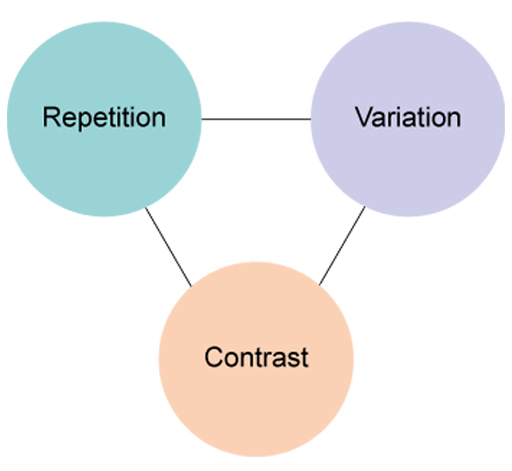1.4 Musical structure
Musical structure is the organisation of the sound which unfolds to the listener through the passage of time. Composers make use of a number of musical devices to bring order to their music enabling it to be meaningful, memorable and engaging for the listener. Three of these musical devices include: repetition, variation and contrast.
Composers use these organising musical devices at both a small and large scale. They might be used to organise the musical material of a short melody, or at a larger scale, a lengthy musical composition. When these musical devices are employed at a large scale organising material into commonly used patterns, we might describe the music as adopting a particular form. A simple form might contrast two musical ideas, but there are many established music forms which use repetition, variation and contrast and combine these in different ways.

